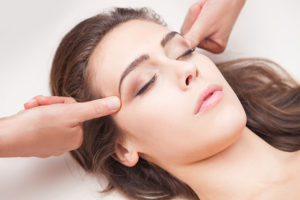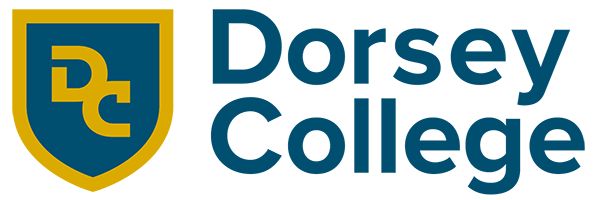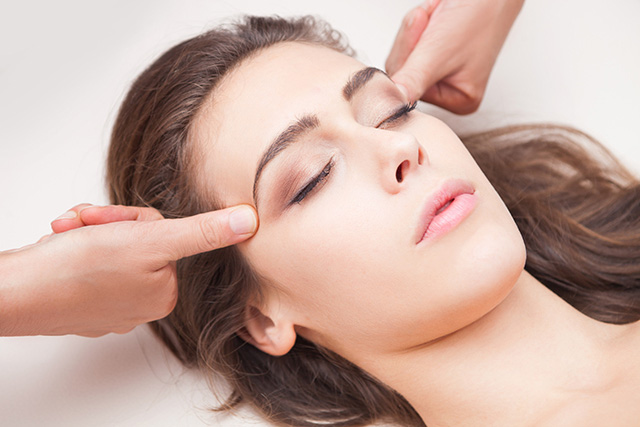Origins for massage therapy techniques are derived from physical care methods that were initially practiced in different countries. Other techniques are closely linked to specific body parts. If you become highly skilled at a technique, your practice may possibly experience growth. Techniques like the Swedish and the Shiatsu massage therapy methods have country origins, namely Sweden and Japan. Kneading, lymphatic, reflexology, wellness, medical, deep tissue, tendonitis, and neuromuscular are other popular types of massage therapy.
Massage Therapy Techniques 
It’s important to remember that obtaining the necessary training in Massage Therapy is just the first step towards beginning your new career as a Massage Therapist. In the state of Michigan, licensure as a Massage Therapist is required in order to obtain gainful employment.
Massage Therapy Techniques May Aim to Heal
Many massage therapy techniques may focus on a specific body part. For example, during your initial consultation with a client, it’s important to discover why the client is visiting your office. Are they experiencing neck pain, migraine headaches, abdominal discomfort, or do they have a medical condition like muscular dystrophy or arthritis that they are seeking temporary relief from? The ailment could signal which specific area of the body you need to work on.
As a general practitioner, you can use a variety of techniques to help your clients. Kneading is used to relieve muscular tension and tightness in areas such as the neck, upper and lower back, shoulders, knees, hips, wrists, and feet. Trigger point therapy is used to relieve fascial tissue that is stressed from overuse or trauma. Trigger point therapy is performed using the fingertips, forearms and elbows.
Reflexology may be used to potentially bring relief to a client’s hands or feet. An example of this is when a professional athlete receives foot therapy to alleviate pressure on the spine or hips. As with other types of massage therapy, it’s important to understand the connection between two or more body parts.
Lessons Learned for Massage Therapy Techniques
You may learn the connection between the left foot and areas like the heart, spleen, and sigmoid colon. You may also learn how the midsection of the right foot affects the liver and the gall bladder. This knowledge can allow you to know which areas to focus on while you perform massage therapy. These techniques are commonly referred as reflexology and please note, reflexology may not be included in all Massage Therapy training programs. If you decide to practice in a state that requires you to be licensed as a Massage Therapist (like the State of Michigan), the license is granted by the state itself.
In addition to types of massage therapy, the effectiveness of your practice may hinge on the pace and/or pressure at which you perform the techniques. For example, if a client is dealing with fibromyalgia issues, you may want to use less vigorous techniques. More vigorous techniques can be utilized when performing sports massage.
Heat and cold (icepack) are external tools that may also change the way that you practice. Both may be used to treat primary areas such as the spine and upper and lower back. Tapping or percussion with your fingers and the sides of your hands could help alleviate pain in the knees, neck, and shoulders. There are also times when it may be advisable to re-position a client or help assist in performing range of motion techniques.
When it is effective, massage therapy may stimulate healing, reduce pressure, rejuvenate, and help restore one or more parts of the body back to its normal state. Ailments or conditions that massage therapy techniques can be used for include scoliosis, arthritis, sports injuries, foot pain, headaches, neck soreness, and stress. Different types of massage therapy may also help with herniated discs, cramps, digestive disorders, muscle strains, and carpal tunnel syndrome.
The Massage Therapy Program at Dorsey Schools
The Massage Therapy diploma program offered at Dorsey Schools in Michigan is designed to introduce students to various massage techniques. The Dorsey Schools Massage Therapy program provides hands-on training in techniques such as Swedish Massage, Deep Tissue Massage, Neuromuscular Therapy, and Sports Massage. Students enrolled in the Massage Therapy program at Dorsey Schools are required to participate in a Supervised Clinical Practice in the Student Massage Therapy Clinic. The program is designed to prepare students to challenge the Massage & Bodywork Licensing Examination (MBLEx) certification exam.
The Dorsey Schools Massage Therapy Program is available at the following campus locations:
Check out our other posts on Massage Therapy here:
What It Takes To Become A Massage Therapist In Michigan
7 Reasons Why You Should Consider A Career In Massage Therapy
Ready to take the next step?
If you want to begin training in Massage Therapy at Dorsey Schools, you can give us a call at 888-422-1188 or click here to contact us.
Do you still have questions? Check out our Massage Therapy FAQ page or you can download our Healthcare Career Outlook Guide to learn more about various career paths in the healthcare field (including Massage Therapy).
Massage Therapy Program – Gainful Employment Disclosures
For more information about our graduation rates, the median debt of students who have completed the Massage Therapy program, and other important information, please click here.
**As of November 29, 2014, massage therapists will be required to obtain a license to work in the State of Michigan. All applicants for a Massage Therapist license must have completed a supervised curriculum in massage therapy that has been approved by the Michigan Board of Massage Therapy. Dorsey Schools Massage Therapy program is an approved supervised curriculum by Michigan Board of Massage Therapy. Dorsey Schools will keep affected students apprised of newly implemented requirements for licensure as a Massage Therapist in the State of Michigan.
Resources:
https://www.amtamassage.org/professional_development/Sports-Massage-Q-A.html

